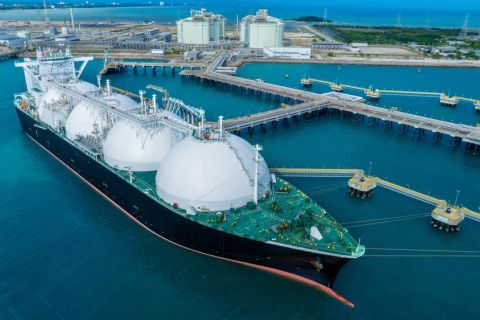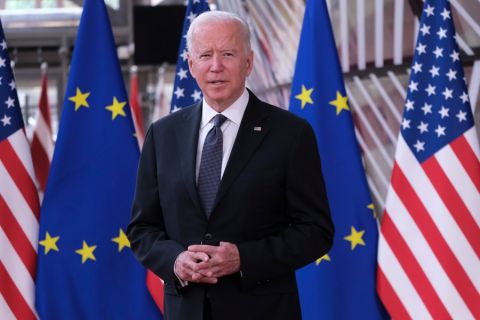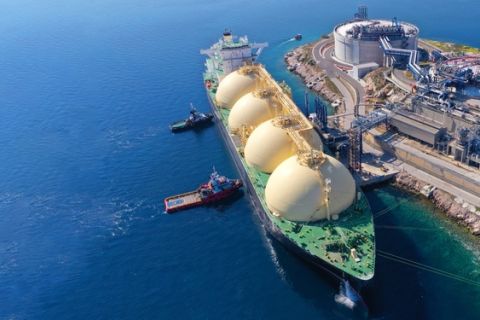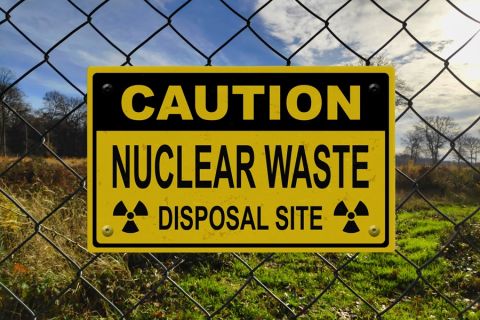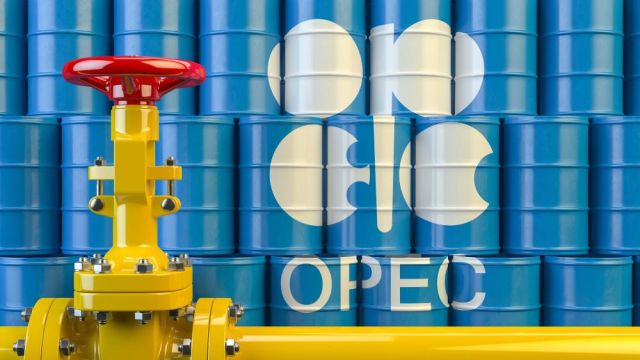
(Source: Shutterstock.com)
Talks between oil producers for deeper cuts to production ran late into the night on Dec. 5 as OPEC officials took longer than anticipated to come to an agreement.
A preliminary meeting of ministers earlier in the day, involving Saudi Arabia and Russia, recommended that producers deepen existing production cuts of 1.2 million barrels a day (MMbbl/d) by 500,000 bbl/d to give a lift to a sluggish crude market.
Alexander Novak, Russia’s energy minister, said on Thursday that a committee of ministers had agreed to cut production until March 2020, when the current deal expires, by 1.7 MMbbl/d.
The curbs then needed to be formally agreed by OPEC ministers on Thursday and by other nations including Russia on Friday.
Ministers were still in closed-door discussions at the OPEC secretariat at 10.45 p.m. Vienna time, when they should have been at a gala dinner to celebrate the success of the OPEC+ alliance. A press conference was also canceled.
Saudi Arabia’s energy minister, Prince Abdulaziz bin Salman, said as he left the OPEC secretariat shortly after 11 p.m. that they could not agree a deal before speaking with Russia and other non-OPEC members in the morning.
“Inshallah [God willing], we say,” he replied when asked if he thought a deal would he agreed on Friday.
Kuwaiti minister Khaled Ali Al-Fadhel indicated a provisional deal had been reached, however, without giving details. One OPEC delegate said a deal between the group for 500,000 bbl/d of additional cuts had been agreed, with the cartel to take on approximately two-thirds of these curbs. The delegate cautioned non-OPEC countries led by Russia would still have to approve the final distribution on Friday.
Rising hopes of a cut had helped boost the oil price on Thursday, with Brent crude, the international benchmark, up almost 5 per cent to $63.50 a barrel over the last two sessions.
The recommendation by Russia and Saudi Arabia had come after analysts had warned that the crude market could be heavily oversupplied in the first half of next year amid robust US shale supply and global economic weakness.
It also came as Prince Abdulaziz, in office only since September, tries to stamp his authority on the group and pushes for greater compliance among producers.
Traders and analysts attending the meeting in Vienna had cautioned that an additional 500,000 bbl/d cut may not be enough to sway oil prices higher in any meaningful way.
Saudi Arabia had already been pumping far below its production target before the attack on some of its critical oil facilities in September. After increasing output as the kingdom recovered, it has since throttled it back.
Bill Farren-Price at RS Energy said the announcement of a deeper supply cut would give a “psychological boost” to the oil market. “But the detail of what this cut will actually entail will be crucial to its longer-term impact on the market,” Farren-Price added.
“It looks like the Saudis have extracted some concessions around greater compliance from other members in return for reducing their own output. But it’s not clear if they will go below the level they were producing before the Abqaiq attack.”
Brent crude has traded near $60 a barrel for much of 2019, lower than its average level last year but not testing the depths seen in 2015 and 2016. Crude then collapsed to below $40, causing widespread hardship for oil-producing countries.
Amrita Sen at Energy Aspects said Opec and its allies—particularly Russia, which has been a partner of the group since 2016—would be wary of throwing a lifeline to the US shale industry, which has started to show signs of slowing after years of bumper growth.
Ann-Louise Hittle at Wood Mackenzie said there was a risk, however, that the market might discount the full effects of the curbs if they were predicated on greater compliance from countries such as Nigeria and Iraq, which have tended to pump above their target.
“The impact on production would be limited because current adherence from producers such as Iraq and Nigeria has been light and they are unlikely to rein in output further,” said Ms Hittle. She added that the market would want to see the deal extended at least into the second quarter of next year.
On Thursday shares in Saudi Aramco, the state oil company, were priced ahead of the company’s long-awaited market flotation, raising $25.6 billion. That makes the deal the world’s largest initial public offering, giving the company a valuation of $1.7 trillion. A stronger oil price would help support the shares in the early days of trading.
Analysts earlier in the day had suggested the group could have even announced a larger cut—perhaps as much as 800,000 bbl/d—as the kingdom tried to engineer a “surprise”.
Recommended Reading
GOP’s Reaction to White House LNG Pause Takes Shape
2024-01-31 - The U.S. House Energy, Climate and Grid Security subcommittee set the date for a hearing on the Biden administration’s recent pause on LNG export approvals for Feb. 6; Republican Louisiana Sen. John Kennedy pledges to block Biden nominees.
Belcher: Election Year LNG ‘Pause’ Will Have Huge Negative Impacts
2024-03-01 - The Biden administration’s decision to pause permitting of LNG projects has damaged the U.S.’ reputation in ways impossible to calculate.
FERC Says 32 Bcf/d in US LNG Capacity Approved, Not Yet Built
2024-01-29 - The FERC—which has jurisdiction over the siting, construction and operation of LNG export facilities in the U.S.—reported that 18 projects worth 32 Bcf/d of export capacity have obtained approval but are yet to be built.
US Customs Rules New Fortress’ FLNG Facility Does Not Violate Jones Act
2024-01-30 - New Fortress Energy’s FLNG facility offshore Mexico can now sell and deliver LNG to U.S. locations.
BWX Technologies Awarded $45B Contract to Manage Radioactive Cleanup
2024-03-05 - The U.S. Department of Energy’s Office of Environmental Management awarded nuclear technologies company BWX Technologies Inc. a contract worth up to $45 billion for environmental management at the Hanford Site.

